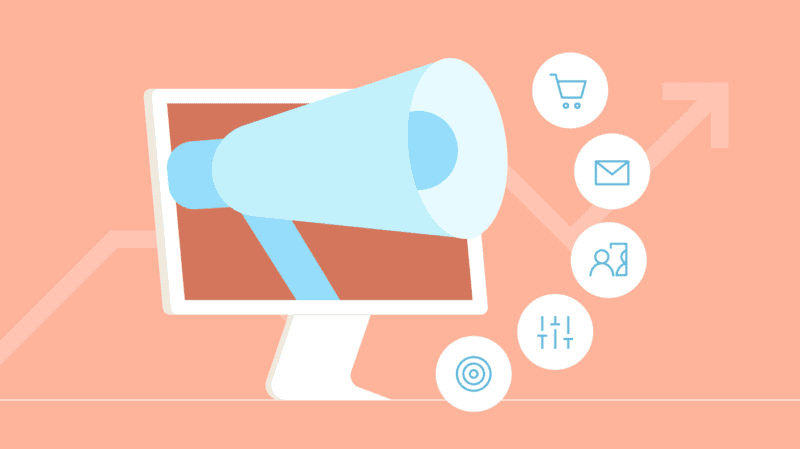Modernize Your Acquisition Strategy By Decommissioning Your DMP

You can future-proof your acquisition strategy to prepare for an ever-evolving environment by sunsetting your data management platform (DMP).
The death of third-party cookies has continued to evolve. Google announced it will be removing them from its Chrome browser by 2024, giving organizations a slightly longer timeline for adjusting to a cookieless world. While third-party cookie deprecation is imminent, this delay is an opportunity for organizations that have yet to nail down their strategies for reducing reliance on anonymous identifiers and third-party data.
Organizations must update their technology stacks with future-proof and flexible solutions that will help them execute on acquisition strategies without third-party cookies. The alternative is becoming entirely dependent on expensive walled garden data, resulting in high customer acquisition costs.
What should be a company’s next step? Determine a strategy going forward to replace their DMP.
Read on to understand the key use cases your DMP is currently solving for and how you can avoid disruption with the right technology.
Modernize Your Acquisition Strategy By Decommissioning Your DMP
You Can’t Have a DMP Without Third-Party Cookies
Third-party cookies serve as the underlying identity framework that allows DMPs to enable person-based advertising at scale. As a result, the way in which marketers effectively target individuals with advertisements will be forced to change.
Acquiring new customers will get more expensive as marketing gets less effective. Centralization will be disrupted, leaving marketers with a bewildering and fragmented set of solutions and considerations to choose from.
The solution is a customer experience hub AKA CX Hub — a collection of tools that centralizes necessary components and integrates into multiple identity spines, durable tokens, walled gardens and clean rooms, enabling organizations to execute across the full gamut of acquisition marketing use cases.
Acquisition Marketing Use Cases: From DMP to CX Hub
Understand the acquisition use cases that DMPs are currently solving for and how a CX Hub can fill that void in a way that is future-proof, agile and efficient. The CX Hub comprises four modular solutions
- Customer 360: our customer data platform (CDP) lets you unify all customer data and obtain a comprehensive view of every each customer.
- Audience Center: create advanced audience segments and activate your customer insights.
- Journey Management: manage journey orchestration and drive results across the customer lifecycle.
- Real-Time Customer Experiences (RTCX): create real-time experiences and show you understand your customers’ needs.
These modular solutions enable brands to give business teams the freedom to explore and action on customer data while helping technical teams extend and enhance existing technology investments to manage data governance, costs and performance.
Keep in mind that DMPs can’t be replaced with a single solution. Consult the chart below to see the capabilities your DMP currently provides and the components that will power your acquisition use cases going forward:
| CAPABILITY | YESTERDAY | TOMORROW |
| Anonymous Addressability | DMP | 3rd-party data providers Walled gardens Other industry solutions (e.g., UID2) |
| Data Marketplace/Collaboration | DMP | 3rd-party data providers 2nd-party data clean rooms |
| Audiencing | DMP | CX Hub |
| Activation | DMP | CX Hub Walled gardens |
| Measurement | DMP | 3rd-party data providers In-house solutions |
Acquisition Strategy Use Case: Prospecting
Here you’re targeting users who have not yet visited your website(s) or application(s).
DMP Approach
Media teams have the ability to build highly granular prospect segments based on combinations of third-party-based data such as tracked behaviors, demographics, locations and advanced models. All of this data is glued together and made addressable within media channels via third-party cookies.
The DMP then allows teams to take those prospect segments and execute, report on and analyze acquisition-based marketing campaigns.
AIQ CX Hub Approach
The notion of prospecting is not going away with third-party cookies. What is changing is:
- The tools a marketer will use in managing prospect data.
- The means in which to address and activate prospects.
- The modeling approaches in identifying if a prospect is in a purchase consideration stage as opposed to other customer journey stages.
A CX Hub is able to connect across both upstream third-party data providers as well as downstream paid media channels. As a result, this provides marketers with a best-in-class audience data orchestration engine to operationalize all components of effective and highly personalized prospecting campaigns.
Acquisition Strategy Use Case: Lookalike Modeling
Lookalike modeling is a capability oftentimes served within prospecting.
DMP Approach
Lookalike modeling with a DMP is often associated with developing a prospect segment that shares similar attributes with a brand’s most valued or highest converting customers. The usual first action in this process is for a brand to “onboard” a dataset of these high-value customers into their DMP.
The profiles within these datasets are then resolved to a 3rd-party cookie ID and then enriched with the same set of attributes with which the larger prospect database shares. It is from this binding of data between the high-value customer seed to the prospect universe that then becomes the foundation from which a lookalike model can be built.
AIQ CX Hub Approach
The AIQ CX Hub approaches lookalike modeling by binding the high-value seed and prospect universe audience segments together. By connecting with third-party data providers, AIQ is able to leverage the identity graphs of these providers to both ingest an addressable prospect universe as well as to enrich the high-value seed audiences against these same identity graphs.
The result is a highly robust data foundation, from which marketers are able to design and build lookalike models all within the UI of the AIQ CX Hub.
Acquisition Strategy Use Case: Retargeting
Retargeting involves targeting prospects who have visited your website and left without taking a desired action.
DMP Approach
To enable a comprehensive and centralized website retargeting effort, there need to be mechanisms in place for tracking, recognition, enrichment and addressability of anonymous visitors to a brand’s website. Like with other use cases detailed above, the third-party cookie was the underlying foundation for these components to come together.
The DMP was the tool that sat on top of this foundation, allowing marketers to design and activate retargeting campaigns in relation to brand engagement behaviors and complement them with additional attributes accessed from third-party data providers, such as individual and household demographics.
Retargeting campaigns are usually divided across relative levels of interest and intent signals that are inferred from these tracked brand engagements, going from a light signal—such as a single pageview session—to a hard signal—such as an abandoned cart or incomplete form-fill.
AIQ CX Hub Approach
A CX Hub deploys a different set of methodologies that build upon requisite data foundations, including tracking, recognition, enrichment and addressability. As a result, marketers can centrally manage retargeting campaigns across the full set of intent and interest cycles across anonymous to known use cases.
This approach includes a robust tag/SDK infrastructure that collects behavioral signals paired with the ability to synchronize and centralize various (non-third-party cookie) identity standards to maximize addressability and provide the ability to build retargeting segments that blend behaviors, as well as individual and household demographics.
Acquisition Strategy Use Case: Website Personalization
This entails personalizing user experience (UX) on owned properties to increase conversions.
DMP Approach
DMPs allow web personalization engines to serve personalized experiences to anonymous visitors in a capacity similar to retargeting. The third-party cookie is used as a means to build and persist a profile that contains attributes that would inform what types of content to serve to that profile, as well as the means to recognize what would trigger such relevant content delivery upon visiting a specific webpage.
AIQ CX Approach
The AIQ CX Hub enables personalization across anonymous users in real-time in two ways:
- Upon a user’s first visit to a site, a CX Hub can orchestrate integrations into identity spines, which would then bring the user downstream into the web personalization engine. The CX hub is then able to execute real-time experience delivery via the tag SDK and VR Identity Sync IP paired with the last-mile delivery system that serves experiences based on enriched identity.
- If there’s an existing first-party cookie with a footprint of that user, the CX Hub can then build a profile around that user. If they’re authenticated, an email or customer ID would be used to make a profile around them. Profile API returns in real time the personalization factor to then orchestrate experiences which can then be replicated.
Acquisition Strategy Use Case: 2nd- and 3rd-Party Data Sharing
This is a strategy for safely sharing 2nd- and 3rd party data.
DMP Approach
Many DMPs enable businesses to access third-party marketplaces for the primary purpose of enriching first-party customer data for more precise targeting and to support lookalike modeling for prospecting. The DMP also had very limited abilities to enable first-party data sharing among second-party data partners.
AIQ CX Hub Approach
A CX hub takes a much more comprehensive approach to data sharing, which is built upon the syncing and operationalization of non-third-party cookie ID standards. This allows the foundation from which first-party data can be safely joined and shared.
From this foundation, integrations with industry-leading data providers who provide consolidation and accessibility of the third-party data ecosystem can be used. The same goes for clean room providers who help brands share, send and receive data from second-party partners such as fellow brands, publishers or retailers.
This solution powers a full host of use cases across enrichment, media suppression, attribution, data monetization and activation.
A CX hub doesn’t just manage the prospecting and retargeting phases of acquisition, but also manages the growth and retention phases across the complete customer lifecycle journey. As a result, this prevents zero-data cold-starts once a customer converts and alleviates inefficiencies by allowing marketers to manage the entire journey through a single flexible tool.
Invest in a CX hub to future-proof your acquisition strategy and navigate an ever-evolving environment.
Learn More About Sunsetting Your DMP
Download The Enterprise Guide to Acquisition Marketing Powered by First-Party Data or get in touch with our experts to define a plan to move beyond the DMP and adopt a future-proof approach.





